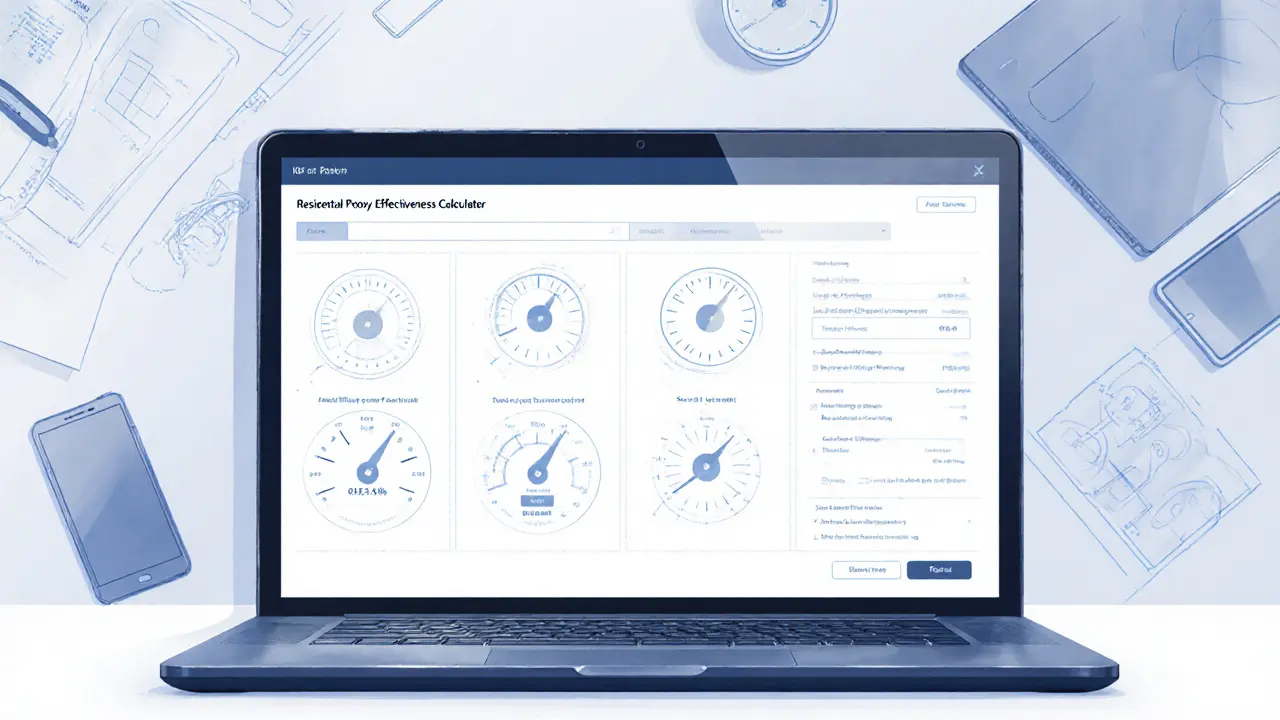Residential Proxy Effectiveness Calculator
Results Summary
Enter values and click "Calculate Effectiveness" to see the comparison between residential and datacenter proxies.
TL;DR
- Residential proxies let crypto traders hide their real IP and run multiple accounts without immediate bans.
- They outperform datacenter proxies in anti‑bot detection tests, but they also open doors for fraud and wash‑trading.
- Choosing a reputable provider and fine‑tuning IP‑rotation timing are critical for reliable bot performance.
- Regulators are tightening scrutiny; expect compliance checks and possible service bans in the next few years.
- residential proxies are powerful tools, but they must be used responsibly to avoid legal trouble.
What Are Residential Proxies?
Residential proxies are a networking service that routes your internet traffic through IP addresses assigned to real‑world residential broadband connections. Unlike datacenter IPs that come from large server farms, these addresses appear to belong to ordinary households, making them look like genuine user traffic to websites and exchanges.
Why Crypto Traders Turn to Them
In Cryptocurrency trading the market moves in milliseconds. A bot that can post an order a few hundred milliseconds faster than a competitor can capture a sizable profit. Residential proxies give bots a low‑latency, low‑ping link that mimics a real user, helping avoid the auto‑blockers most exchanges deploy against high‑frequency automation.
Key advantages include:
- Ability to manage dozens of wallets from a single machine without triggering IP‑based bans.
- Access to geo‑restricted exchanges or features that only serve certain countries.
- Added privacy layer that shields personal IP from potential DDoS attacks.
How the Technology Works in Practice
When a trading bot initiates a request, the proxy service swaps the bot’s original IP with a residential IP from its pool. Two session models dominate the market:
- Sticky sessions: the same IP is retained for up to 30 minutes, ideal for actions that need continuity, like order placement or wallet login.
- Rotating sessions: the IP changes with each request, useful for account creation or scraping price data without leaving a footprint.
IP rotation must be timed carefully. Rotate too quickly and exchanges may flag the activity as suspicious; rotate too slowly and the bot loses the anonymity benefit.
Effectiveness Compared to Datacenter Proxies
Datacenter proxies deliver raw speed but suffer from a high detection rate because their IP blocks are publicly listed as server ranges. Residential proxies, sourced from real ISPs, blend in with normal traffic, giving them a higher success rate in anti‑bot tests.
| Feature | Residential Proxies | Datacenter Proxies |
|---|---|---|
| Detection by exchange anti‑bot systems | Low (≈10‑15%) | High (≈45‑60%) |
| Typical latency | 30‑80ms | 20‑50ms |
| Geographic diversity | Worldwide residential pools | Limited to data‑center locations |
| Cost per month (high‑volume) | $300‑$1,500 | $100‑$500 |
| Compliance risk | Higher scrutiny | Lower but still monitored |
For most automated strategies, the lower detection rate outweighs the modest latency penalty, making residential proxies the preferred choice.

Benefits for Trading Bots
Professional Trading bots rely on continuous market monitoring. Residential proxies enable bots to:
- Run arbitrage loops across multiple exchanges without IP bans.
- Maintain separate session cookies for each account, reducing cross‑account contamination.
- Hide order‑book probing activity that could otherwise be flagged as market manipulation.
Several traders report a 12‑18% increase in execution success rates after switching from datacenter to residential proxies, especially on high‑traffic platforms like Binance and Coinbase Pro.
Risks and Abuse Scenarios
While the technology offers clear advantages, it also opens doors for illicit behavior. Trend Micro research shows criminals using residential proxies for credit‑card stuffing and money‑laundering, bypassing geographic fraud checks.
In the crypto world, the following abuse patterns have surfaced:
- Wash trading: creating multiple accounts to trade against oneself, inflating volume and price.
- Market manipulation through coordinated bot fleets that appear as ordinary traders.
- Regulatory evasion by routing transactions through IPs in jurisdictions with lax oversight.
A 2022 Forbes analysis of 157 exchanges estimated that over half of daily Bitcoin volume could involve fraudulent activity, with residential proxies cited as a key enabler.
These risks translate into potential account bans, legal actions, and loss of reputation for legitimate traders who inadvertently share proxy services with bad actors.
Pricing Landscape and Market Size
The global proxy market reached $1.8billion in 2023 and is projected to grow 13.5% annually through 2028. Leading providers such as Bright Data, Oxylabs, and Smartproxy report a surge in crypto‑trading customers.
Typical pricing tiers:
- Starter: 100GB/month, $300 - suitable for hobbyist bots.
- Professional: 1TB/month, $900 - enough for multiple exchange connections.
- Enterprise: 5TB+/month, $1,500+ - for high‑frequency firms running dozens of concurrent bots.
Beyond cost, traders must consider bandwidth caps, session limits, and API access when selecting a provider.
Implementation Best Practices
- Start with a small pool. Test a handful of residential IPs on a single exchange before scaling.
- Synchronize IP rotation with order timing. Use a rotation interval of 20‑30seconds for price‑feed scraping; switch to sticky sessions for order execution.
- Separate credentials per IP. Keep API keys, cookies, and wallet seeds isolated to avoid cross‑contamination.
- Monitor latency. Set alerts for ping spikes above 100ms; high latency often means the proxy node is congested.
- Stay compliant. Record IP origin, provider details, and usage logs in case regulators request audit trails.
Many traders report a 2‑4‑week learning curve for basic setups; mastering advanced rotation algorithms can take months.
Future Outlook & Regulatory Climate
Analysts predict tighter scrutiny from financial regulators worldwide. By 2025, major exchanges may require proof of proxy compliance, including statements of lawful use and data‑retention policies.
Providers are already adding compliance layers-IP‑origin certificates, geo‑filtering options, and APIs that flag suspicious traffic patterns. Legitimate users who adopt these tools early will likely face fewer disruptions.
In the long run, the market will split into two camps:
- Regulated, transparent services catering to institutional traders with built‑in KYC/AML checks.
- Underground services that continue to fuel illicit arbitrage and wash‑trading, but with increasing risk of shutdown.
Choosing the right side now means weighing profit potential against legal exposure.
Frequently Asked Questions
Do residential proxies guarantee that my crypto bot won’t be blocked?
No. They lower the odds of detection, but exchanges constantly update anti‑bot algorithms. Proper session management and adhering to each platform’s rate limits are still essential.
Are residential proxies legal for cryptocurrency trading?
Using them is legal in most jurisdictions, but using them to evade regulations, conduct fraud, or manipulate markets is illegal. Always check local financial compliance rules.
How much bandwidth does a typical trading bot consume?
A lightweight market‑data scraper may use 10‑20GB per month, while a high‑frequency arbitrage bot can exceed 200GB, especially if it streams order‑book depth from multiple exchanges.
Can I use the same residential proxy provider for both crypto and e‑commerce bots?
Technically yes, but many providers enforce usage policies that separate financial services from retail automation. Violating those terms can lead to account suspension.
What are the red flags that a proxy service might be involved in illicit activity?
Unusually low prices, lack of a clear data‑retention policy, and anonymous payment methods are common warning signs. Reputable providers publish compliance documentation and offer customer support.

